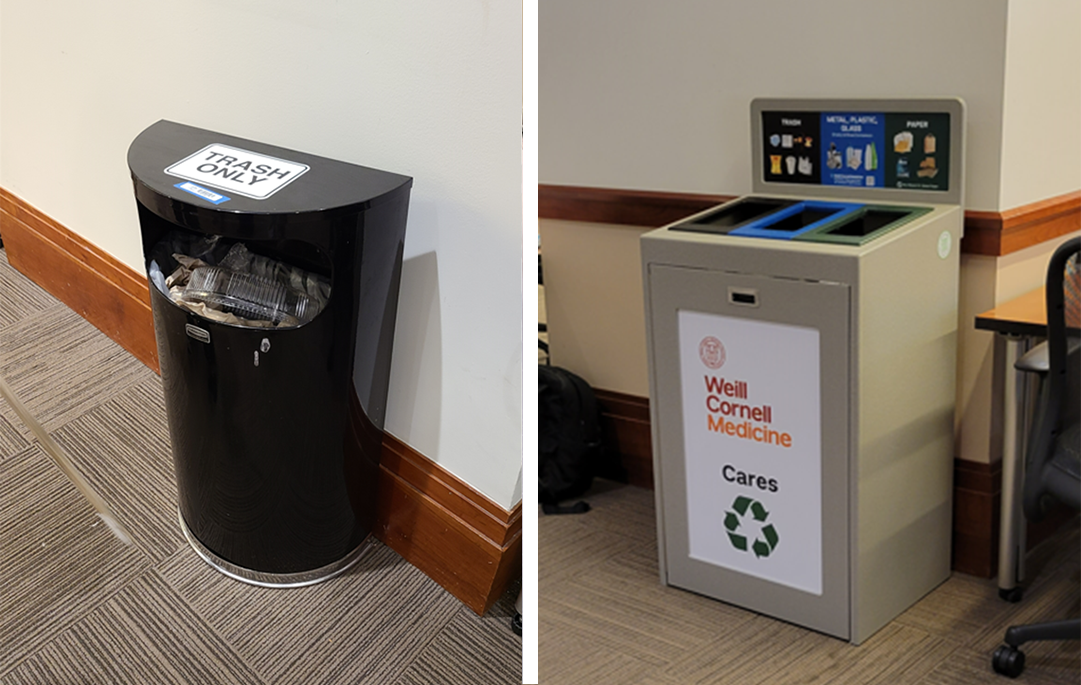Recycled plastic bottles are used to make carpet, clothing and even auto parts.
To reduce waste and improve recycling on campus, the Office of Energy and Sustainability (OES) launched a waste bin revamp pilot project, which will standardize the main campus's waste bin infrastructure.
The Library and the Student Education Center, on the first and second floor of the main building, were selected as the ideal spaces to start the new bin pilot.
The project’s first step was to audit the bins in piloted locations to understand the quantities of trash and recycling generated and the common recycling mistakes. During the waste audit, OES staff collected and manually sorted all trash and recycling bags. This helped us understand the appropriate number of bins needed in the space, the ideal size, and the type of signs that would be most helpful for the WCM community.

Waste audit of all trash and recycling bins from the library space.
We learned through this analysis that the variety of bin styles and colors used, specifically for recycling bins, needed to be clarified, and the lack of clear signs in most bins may have caused confusion about where discarded items should be placed. We also noticed that some bins were prone to overflowing, others were underutilized, and a few spaces were lacking recycling bins.
Going forward, we will follow the waste color scheme used by the NY Department of Sanitation: black/grey for trash, green for paper, and blue for metal, plastic, and glass (MPG). Zero-waste consultants and bin vendors have recommended the centralized recycling system, and we are testing this system in select offices and classrooms.
- This system requires faculty, staff, and students to walk to a recycling bin where trash, paper, and MPG bins are next to each other and requires thought about where the items should be placed.
- Several case studies have shown improvement in recycling rates and reduction in contamination when using this method and following this example, we removed all bins from classrooms and placed the new recycling stations in the corridors.
- Housekeepers will no longer need to go into the classrooms to change trash cans, minimizing disruptive noise from moving cumbersome receptacles.
- An essential part of this plan was the development of new signage that takes into account the most common recycling mistakes identified during the audit.


Left: Previous waste bins on campus
Right: Pilot program waste bins
Review common recycling mistakes found during the audit.
The second step of the process was the selection of bins and developing customized signage.
We selected CleanRiver as the preferred vendor for this project:
- CleanRiver is a leader in smart, customizable recycling and waste management solutions with 30+ years of experience in the field.
- Bins are made from milk jugs from North America.
- These bins were selected for customizability and flexibility, which allows us to make changes in the future without the need to replace the entire bin, and improve ease of service for custodial staff.
Monitor Recycling Practices
The new bins were delivered and set up at the beginning of August. The OES will monitor recycling practices in the Library and Student Center for the next few months to understand whether the new bins are successful in improving recycling, whether the estimated number and size of the bins are appropriate, or whether adjustments are needed.
For this revamp project, the OES is working closely with the Housekeeping staff, CleanRiver, the Operational Communications office.
